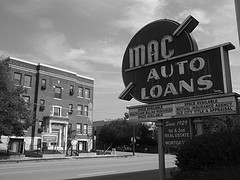
flickr.com/75001512@N00
Even if it is just substance outgassing, there’s nothing like that new car smell. It says you’re responsible, smart, and successful. In fact, the only thing better than the new car smell is the pride you’ll feel as you take your new wheels for a ride.
It’s certainly no secret that driving a stylish new car is exciting and fun. New cars carry warranties that protect you from unnecessary repair and maintenance bills for extended periods of time, so they can be great investments. Read more . . .